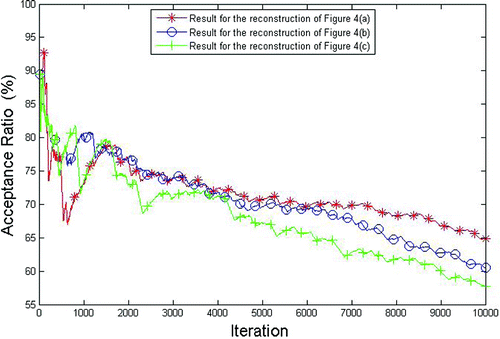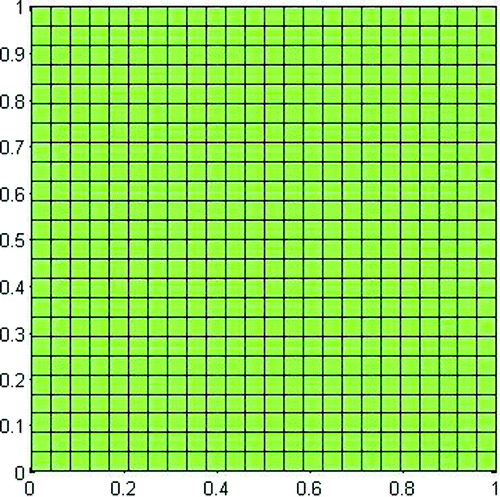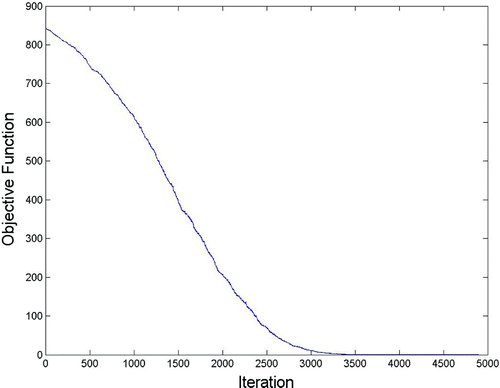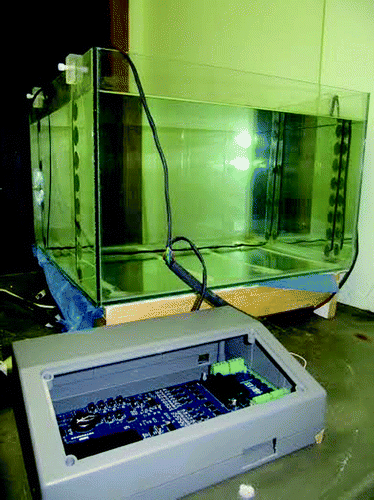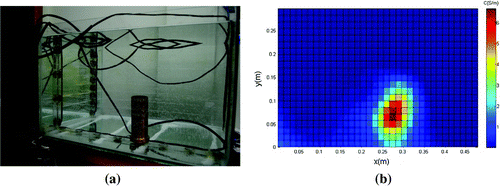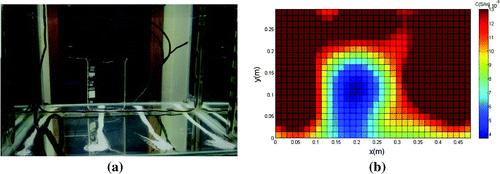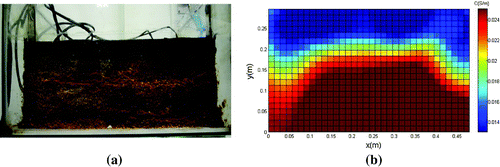Figures & data
Figure 1. Numerical phantom used to simulate the data acquired by an EIT system: (a) Electrodes distribution and (b) domain discretization.
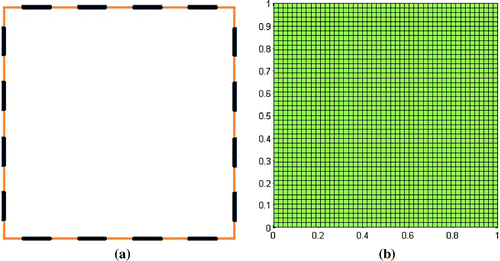
Figure 2. Phantom conductivity distributions. The areas in red have conductivity equal to 5 conductivity measurement units (cmu) and the blue colour region has conductivity equal to 2 cmu.
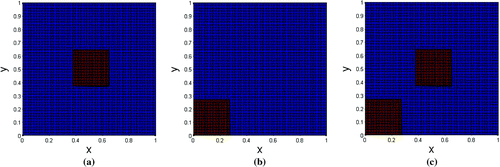
Figure 4. Reconstructions of domains presented on Figure using the proposed SA approach. (a) Reconstruction for Figure (a); (b) reconstruction for Figure (b) and (c) reconstruction for Figure (c).

Figure 5. Reconstructions of domains presented on Figure using Herrera’s approach. (a) Reconstruction for Figure (a); (b) reconstruction for Figure (b) and (c) reconstruction for Figure (c).

Figure 6. Acceptance ratio as a function of the number of iterations for the reconstructions of Figure . In red, result for the reconstruction of Figure (a). In blue, result for the reconstruction of Figure (b). In green, result for the reconstruction of Figure (c).
